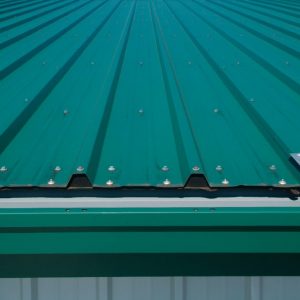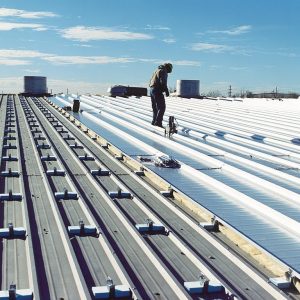Your facility has served you well over the years, but like any structure, its components may deteriorate over time. The roof and wall systems, in particular, are critical elements that protect your assets and ensure a comfortable environment. In this blog post, we’ll discuss the factors that indicate when it’s time to consider replacing the roof or wall system of your existing pre-engineered building and the reasons behind it.

- Age and Wear:
Over time, even the most well-maintained roof and wall systems experience wear and tear. If your building has reached its expected lifespan or is showing visible signs of deterioration, such as leaks, corrosion, or material degradation, it’s a clear indicator that replacement is necessary. The good news is, you don’t necessarily need a completely new facility. Investing in a new system ensures optimal functionality, improved aesthetics, and enhanced protection against the elements – and is less expensive than moving altogether.
- Structural Integrity:
If your pre-engineered building’s roof or wall system has suffered significant damage due to severe weather events, accidents, or unforeseen circumstances, it may compromise the structural integrity of the entire building. In such cases, it’s essential to assess the extent of the damage and consult with professionals to determine if replacing the affected system is the most viable solution. Ensuring the safety and stability of your building is paramount.

- Energy Efficiency:
Outdated roof or wall systems can contribute to energy inefficiency, resulting in increased heating or cooling costs. Upgrading to newer systems with improved insulation properties can lead to substantial energy savings over time. A new roof or wall system can also provide better temperature regulation, reducing the strain on HVAC systems and enhancing occupant comfort.
- Technological Advancements:
Advancements in pre-engineered building technology have led to the development of more advanced and efficient roof and wall systems. These newer systems offer improved performance, enhanced durability, and increased resistance to environmental factors. Upgrading to modern systems can provide long-term benefits, such as reduced maintenance requirements and extended service life.

- Compliance with Building Codes and Standards:
Building codes and standards evolve over time to ensure safety and performance. If your existing roof or wall system no longer meets current code requirements or industry standards, it may be necessary to replace it. Staying compliant not only ensures the safety of occupants but also helps avoid potential legal issues or insurance complications.
Conclusion:
Knowing when to replace the roof or wall system of your existing pre-engineered building is crucial for maintaining its functionality, safety, and efficiency. Factors such as age, wear, structural integrity, energy efficiency, technological advancements, and compliance with codes play a significant role in the decision-making process. Consulting with experts in pre-engineered building systems can help assess the condition of your current system and guide you toward the best course of action. By investing in a new roof or wall system, you can secure the longevity and performance of your building, protecting your assets and ensuring a comfortable environment for years to come.

